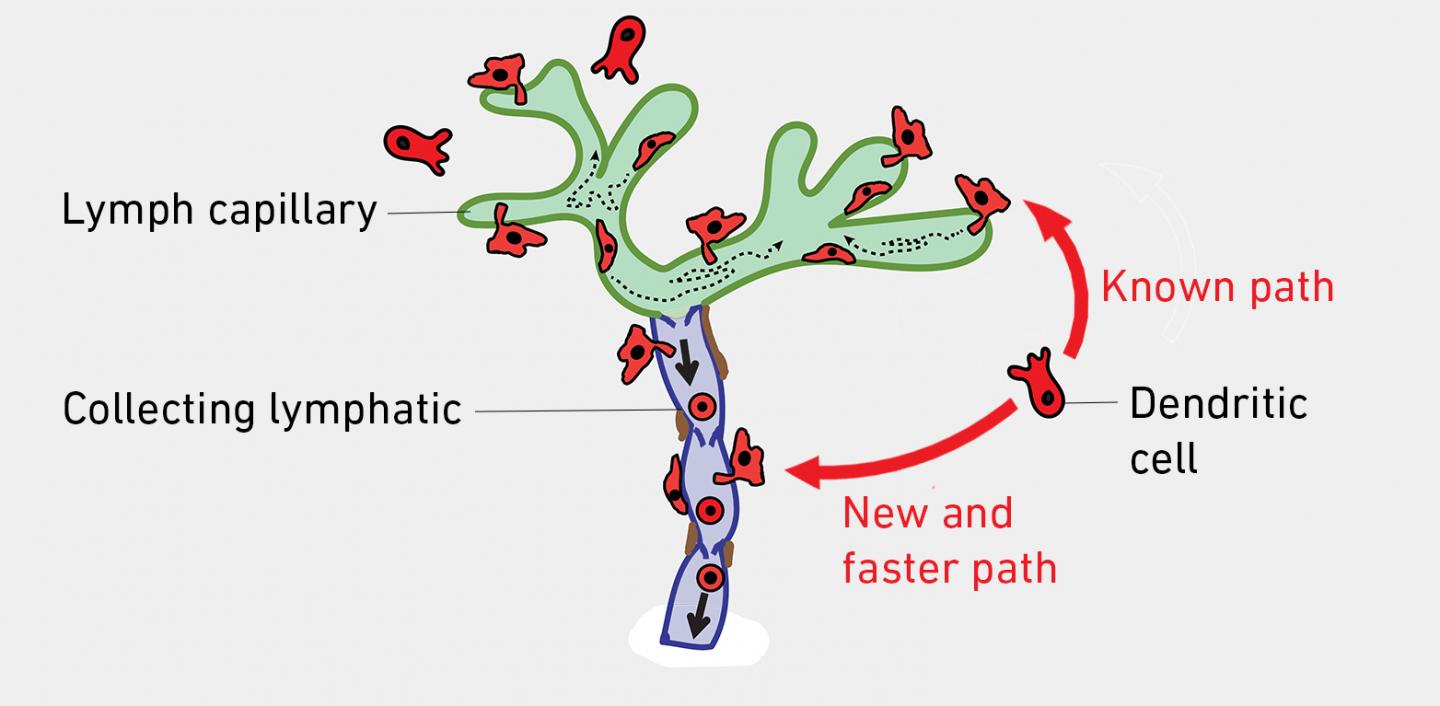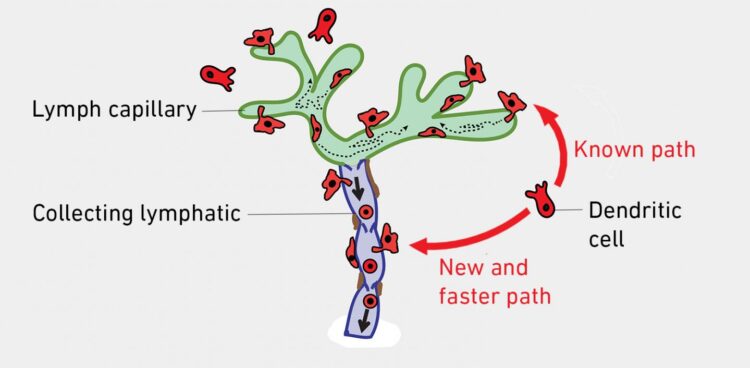
Credit: Source: Arasa et al. Journal of Experimental Medicine 2021, modified
In its response to pathogens and vaccines, our immune system relies on dendritic cells. These white blood cells patrol the body’s tissues, collect components of pathogens and vaccines and transport them via lymphatic vessels to the nearest lymph node. There, they present the collected material to other immune cells in order to trigger an immune response.
How exactly dendritic cells get from the tissue into lymphatic vessels and from there to the lymph node is the focus of research conducted by Cornelia Halin, Professor of Pharmaceutical Immunology at ETH Zurich. For a long time, scientists assumed that dendritic cells choose the path of least resistance and migrate from the tissue into the smallest branches of the lymphatic vessels, the lymphatic capillaries. This is because, unlike other lymphatic vessels, capillaries are surrounded only by a thin, barely closed layer of cells, allowing dendritic cells to slip through the spaces between neighbouring cells relatively easily.
However, this route is slow. While cells in blood vessels and in most other lymphatic vessels are carried along by a flow of fluid, virtually no flow is present in lymphatic capillaries. Consequently, cells in these capillary vessels need to actively move themselves forward, which only happens at an extremely low speed.
Faster despite obstacles
With her team, ETH Professor Halin has now discovered that dendritic cells can take a shortcut. In studies performed on mouse tissues and employing microscopy, the scientists were able to show that dendritic cells can also migrate directly into those lymphatic vessels into which the capillaries merge: the collecting lymphatics. These vessels are surrounded by a well-sealed layer of cells and a thicker membrane of connective tissue. Consequently, migration across these barriers is more difficult for dendritic cells, and entry takes longer than into capillaries. All in all, however, dendritic cells taking this path arrive in the lymph nodes much faster, since immediately after entry they are carried along by the lymph flow present in the collecting vessels and can bypass the slow active migration step in the capillaries.
Thinner barrier in case of inflammation
At present, it is not yet completely understood under which circumstances dendritic cells choose the known path via the capillaries and under which they take the newly discovered shortcut. As ETH Professor Halin and her colleagues have shown, the shortcut becomes available when there is an ongoing inflammatory response in the tissue. Specifically, the researchers were able to show that the connective tissue membrane surrounding the collecting lymphatics becomes degraded during inflammation, making it easier for dendritic cells to penetrate into the collectors.
It thus appears that an inflammatory response is the key factor that allows dendritic cells to take this shortcut and arrive more quickly in the lymph nodes. The scientists will now investigate whether all dendritic cells or only specific subtypes can travel via this route. In particular, they plan to explore the importance of the newly discovered pathway for the activation of the immune system and for installing immune responses. They suspect that the ability to sound the alarm in the lymph node more quickly may provide an advantage in fighting certain infections.
###
Media Contact
Cornelia Halin
[email protected]
Original Source
https:/
Related Journal Article
http://dx.





